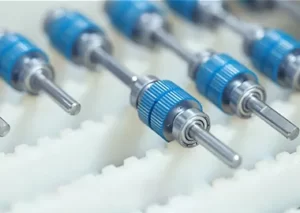Have you ever wondered about the technology that powers precision-based systems like 3D printers, CNC machines, and robotics? Or pondered about what makes these machines move with such accuracy and control? Behind the scenes, a little device known as a stepper motor plays a significant role. But what makes stepper motors a popular choice, and are there any drawbacks to using them?
Stepper motors, in essence, offer the key advantages of precision control and simplicity of implementation, which make them a go-to for many automation systems. However, they do come with a few challenges, such as limitations in speed and potential loss of synchronization.
Sounds intriguing? Let’s dive in to understand the nuances of stepper motors, their benefits, and potential challenges.
What Are the Advantages of Stepper Motors?
Stepper motors offer a range of advantages, especially in applications where precision and control are paramount. One of their key benefits is precision control. They provide accurate positioning and repeatability, dividing the full rotation into a large number of steps.
Another advantage is the simplicity of control. Stepper motors don’t require feedback for control, making the system simpler and more straightforward.
Additionally, they provide low-speed torque. Stepper motors perform well at low speeds, offering constant torque across a range of operating speeds. They also have the ability to ‘hold’ their position when stationary, adding to their control capabilities.
What About the Disadvantages of Stepper Motors?
While stepper motors are powerful tools, they do have their limitations. The primary disadvantage is their performance at high speeds. Unlike some other motor types, stepper motors can lose torque as speed increases, which can limit their effectiveness in high-speed applications.
Another potential challenge is resonance issues. Due to their step-by-step motion, stepper motors can face resonance problems which could lead to loss of control or reduced operational life.
Stepper motors can also experience a phenomenon known as missed steps. This can occur when the motor is overloaded or swiftly changes direction, potentially leading to errors in positioning.
How Do These Advantages and Disadvantages Influence the Choice of Motor?
The pros and cons of stepper motors influence their suitability for specific applications. Precision-based applications, such as CNC machines or 3D printers, benefit greatly from the accurate control of stepper motors. However, for high-speed, high-torque applications, other types of motors might be more suitable.
Conclusion
Stepper motors, with their high precision control and straightforward operation, are a powerful choice for many applications. Yet, understanding their limitations is key to leveraging their benefits fully. With the right application and potential mitigations in place for their disadvantages, stepper motors can truly shine, proving that in the world of motors – there is indeed a perfect fit for every application!


